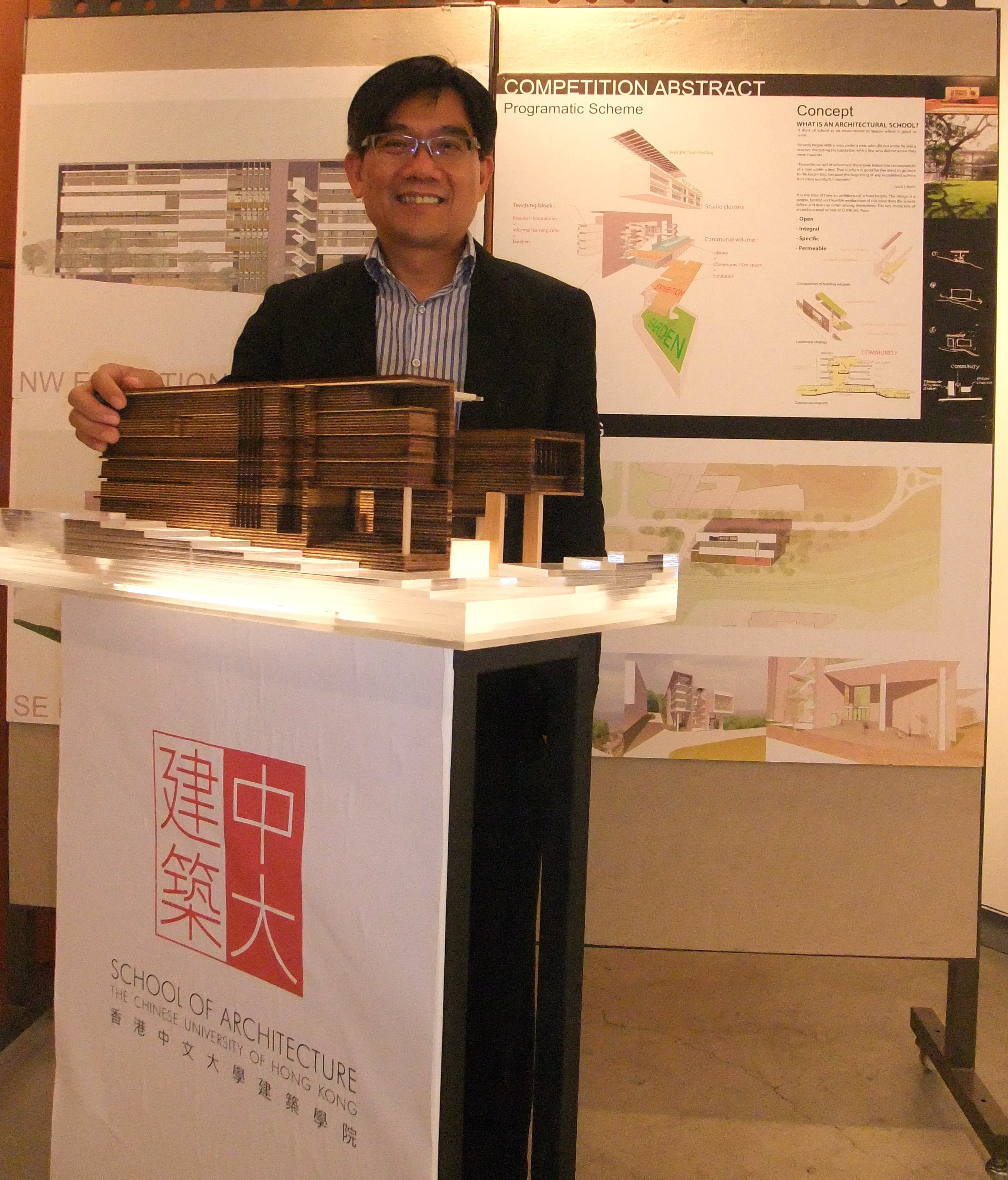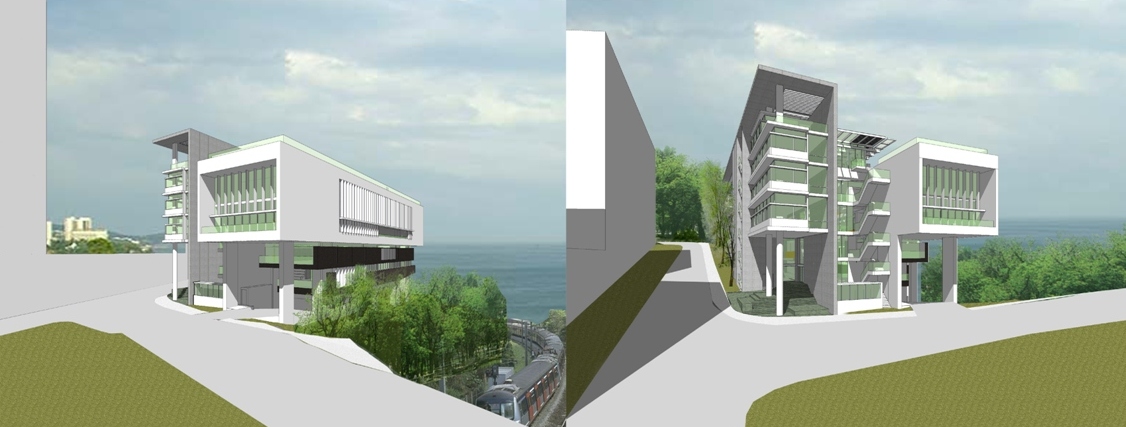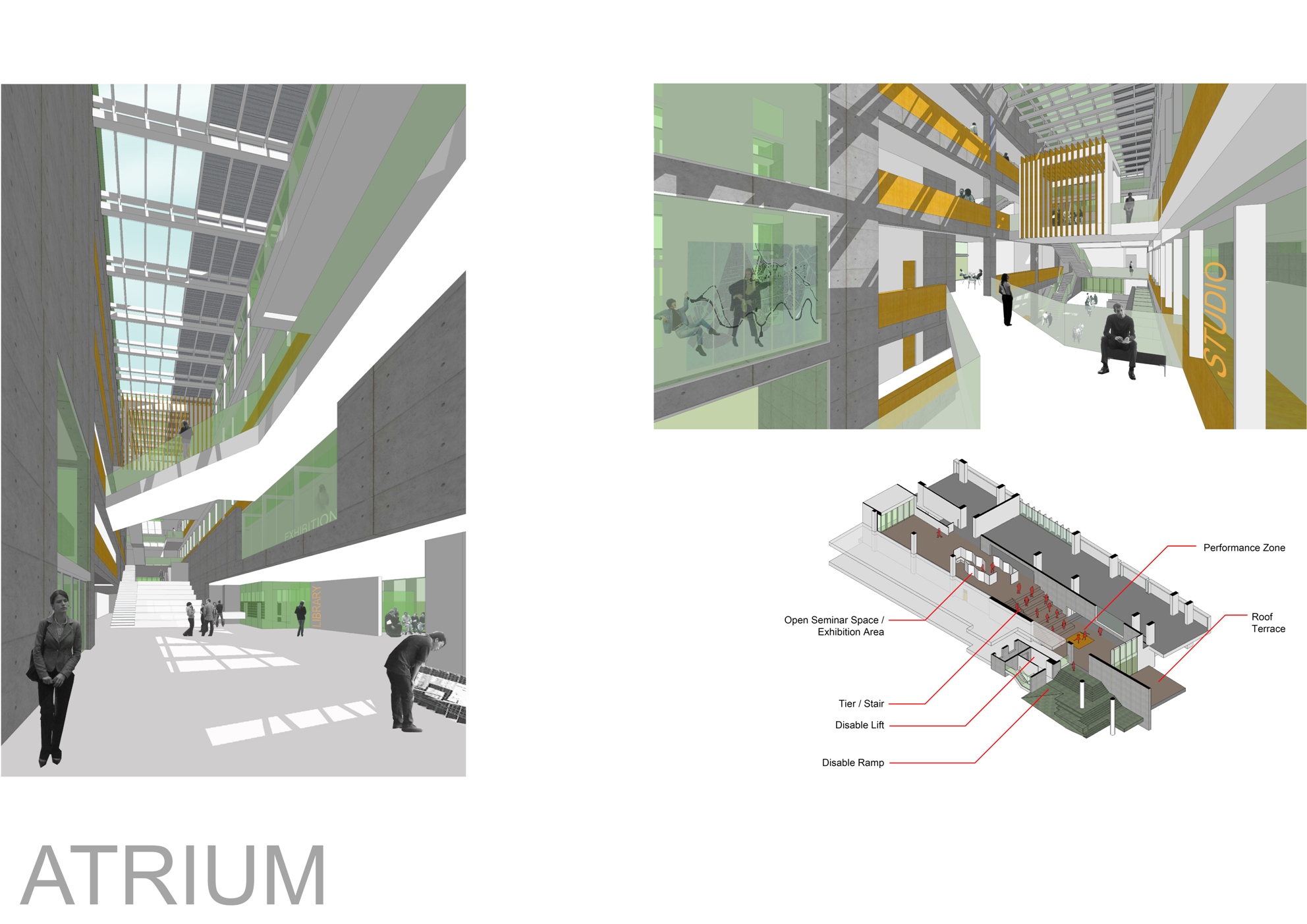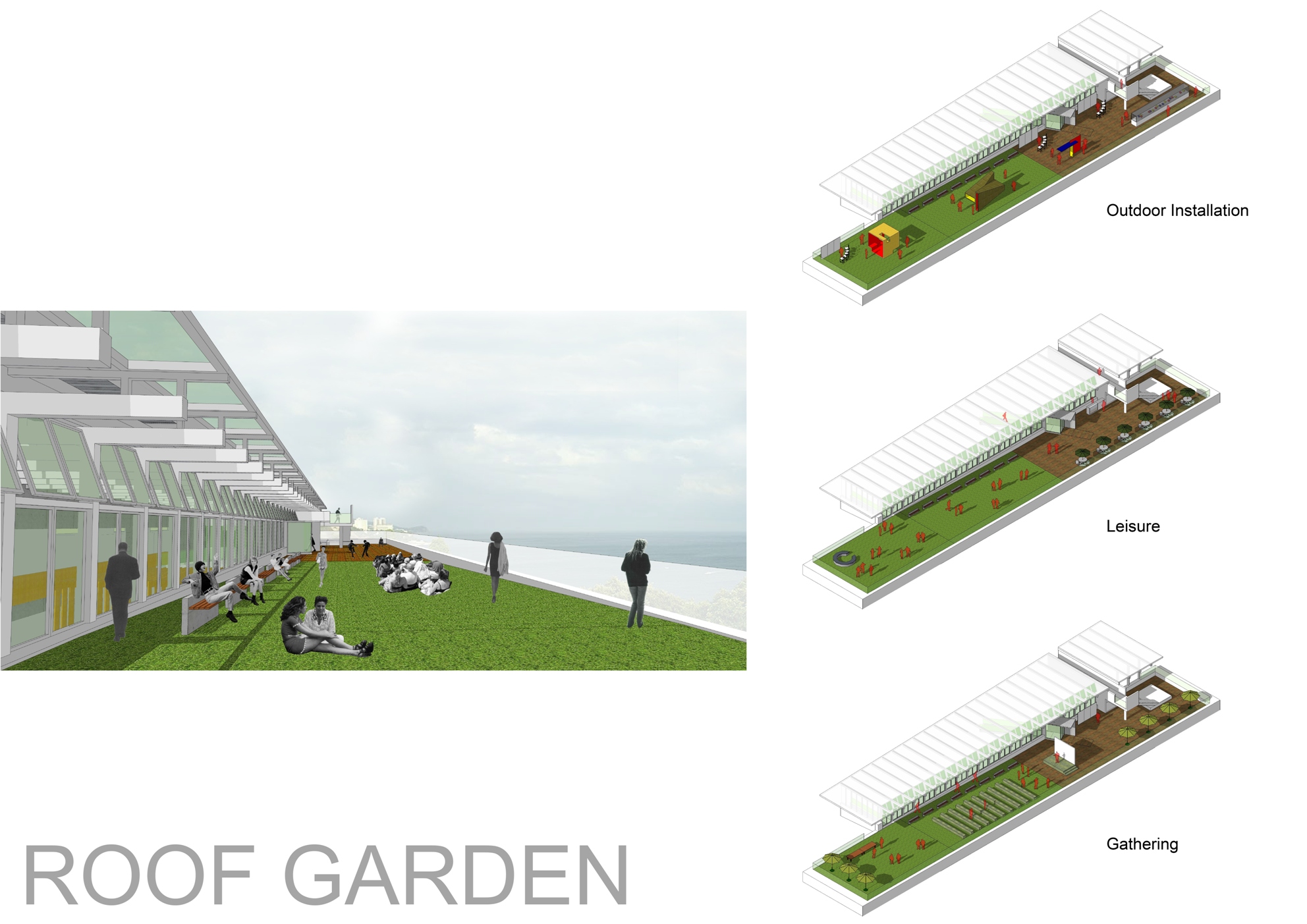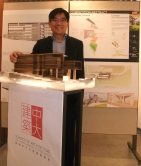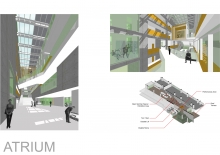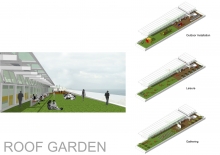CUHK
News Centre
CUHK School of Architecture Celebrates 20th AnniversaryUnveiling New Academic Programmes and New Teaching Building
In celebration of its 20th anniversary, the School of Architecture at The Chinese University of Hong Kong (CUHK) will organize a series of activities to promote architecture design and education, community participation in sustainability projects, and to share achievements made in the past two decades. In the past twenty years, the School has created a research and teaching ethos that valued excellence and innovation, emphasizing on its contribution to the community. With a strong team of experts in sustainable environment and building, as well as in Chinese architecture, the School has been playing a pivotal role in the formulation of policies in sustainable urban planning and heritage conservation. 'Building on its solid foundation in teaching and research, the School of Architecture will continue to contribute to and work with the community in furthering the understanding of architecture and urban issues. We will strive to broaden our research and teaching concerns to address current concerns and build a conducive and sustainable future for our community and beyond,' remarked Prof. Ho Puaypeng, Director, School of Architecture.
Teaching
The mission of the School of Architecture is to advance knowledge and prepare students for the increasingly complex world. As such, it keeps improving its teaching pedagogy constantly. Over the years it has not only consolidated pre-professional degree programme by integrating subject knowledge with studio exploration, it also encourages diversity and richness in its professional programme. Students explore design solutions backed by careful research with a view on international practices by focusing on investigating into pertinent issues facing the built environment in this region and organizing joint and collaborative studios with leading schools of architecture around the world.
With strong expertise in sustainability, the School has been offering the Master of Science programme in Sustainable and Environmental Design, the only such course in the region. Taught by a pool of international experts, the programme focuses on the cutting edge practices in the field.
To cater to community needs, the School is planning an undergraduate programme in urban studies with the Department of Geography and Resource Management and a master degree programme in urban design to be offered in 2012/13. A master degree programme in architectural conservation and design is also being planned for 2012/13.
The School of Architecture will move into a purpose-built building in 2012. The building design was procured through an international design competition and the winning design represents the value and direction of the School. This can be seen in the design of a large atrium that will be the hub of activities for the School, the space can be used for exhibition, lecture, gathering, review, and other activities that will harness the solidarity of the members of the School as well as serving as a centre for interaction. The large and uninterrupted spaces for studio and review are also very useful for the teaching and learning of the different programmes the School offered. The building is also designed to the highest standard in sustainability in the use of less energy, natural lighting and ventilation, and better electrical and mechanical controls.
Research
Research is at the core of the activities of the School of Architecture, involving teachers and students. It is very strong in the research of achieving a sustainable environment in the region. Members of the School engage in the study of urban heat island effect, ventilation through the urban centre, sustainability design for improving living condition, façade engineering and other concerns. The School initiated research on air ventilation in the city resulting in changes in the planning regime to ensure air flowing through the thick urban fabrics of Hong Kong. Members of the School are core members of the Green Building Council in mainland China and Hong Kong, and assisted in rewriting Green Building standard in Hong Kong.
Located at the epicenter of the fastest urbanization process in the world, the School addresses the issues in urban planning and design in research and practice. It is engaged in the study of the local urban districts and the planning of cities in the Pearl River Delta. Publications and workshops are organized to explore the design of better urban environments while balancing the needs of various stakeholders. Many of its faculties are founding members and office bearers of the newly created Hong Kong Institute of Urban Design.
The School of Architecture is also a strong base for the study of Chinese architecture design, history and theory. A few members are well known internationally in this field. They investigate into and published on ancient and modern history of Chinese architecture, education and practices of Chinese architects in the early 20th century, architecture theory and design theory, and heritage conservation. In addition, the Centre for Architectural Heritage Research of the School is active in contributing to the study and conservation of Hong Kong historic fabrics, and at the same time influencing the government on its conservation policy.
Above all, the School of Architecture sees itself as an integrative hub of knowledge and professional expertise in the design of the built environment in its complex and multi-dimensional scope. This is reflected in its teaching as well as research. The three main fields, namely sustainability, urban studies and design, and architectural heritage conservation, described above are augmented by the other areas of expertise in architectural computation, digital fabrication, material and structural research, and other social and cultural studies. Design, always at the centre of all activities related to the School, is the key platform to facilitate, express and demonstrate such multi-disciplinary integration.
Serving the community
The School of Architecture has a long track record in serving and involving the community. Public engagement and community design exercises are frequently held for the betterment of urban and design environment in Hong Kong. It started the public campaign entitled Designing Hong Kong in 1999 led by Prof. Jack Sidener. Prof. Bernard Lim is involved in the research and recommendation for the design of school and old-people homes. During the SARS epidemic in 2003, members of the School led by Prof. Tsou Jin-yeu contributed enormously in the research of the effect of building design in the transmission of air-borne virus. Prof. Edward Ng conceived of the Wu Zhi Qiao project in 2005 to help remote communities in mainland China build bridges which has now grown to be a major collaborative project with enormous impact. Many school building and earthquake relief projects were undertaken by Prof. Zhu Jinxiang and Prof. Edward Ng in mainland China. In Hong Kong, Prof. Wallace Cheng champions for many years the transformation of Kai Tak river, working with community groups. Prof. Thomas Chung and Prof. Marisa Yiu were involved in the organization of architecture biennales in Hong Kong raising awareness of urban and architectural issues among the community.


